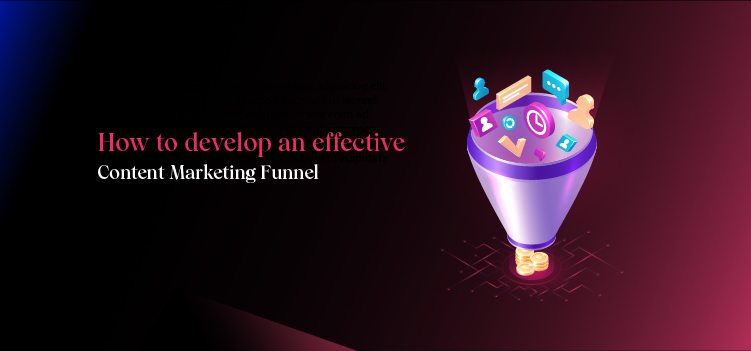Whether they engage with you in person or online, you want more patrons. And if we’re being completely honest, we can all relate to it.
Customers ought to rush to your website now that it is attractive and has content that is SEO-rich, right? No, not always.
So how can you subtly and deliberately direct clients to your product and services?
How? With a carefully designed content marketing funnel.
With the appropriate advice, and we’re here to help, successfully mapping your content for the funnel stages may be an easy process. Let’s start now.
What is Content Marketing Funnel
An effective content marketing funnel is a strategy for attracting, engaging, and converting your target audience into customers. It involves creating valuable content that addresses the needs and main points of your audience and then using that content to move them through a series of stages, from awareness to consideration to conversion. Here are some steps to help you build an effective content marketing funnel.
Initially, we can brief you on the stages of the content marketing funnel:
- Top of the funnel: attracts attention
- Middle of the funnel: generates leads
- Bottom of the funnel: drives conversions
By understanding the needs of your potential customers at each stage of the funnel, and providing the right content to meet those needs, you can help to build trust and credibility with your audience, and ultimately, drive conversions.
Let us understand each step keenly :
Top of the Funnel: Igniting interest and curiosity
Top-of-the-funnel (TOFU) content is content that is aimed at attracting and engaging potential customers who are at the early stages of the buying process. This type of content is typically educational and informative and is designed to introduce your brand and provide value to your audience. Examples of top of the funnel content include blog posts, videos, infographics, and social media posts that provide general information about your industry, products, or services. The goal of TOFU content is to help potential customers understand their needs or problem and to build awareness of your brand as a potential solution. By providing valuable and relevant TOF content, you can help to build trust and credibility with your audience, and move them further down the funnel towards conversion.
Middle of the funnel: Inculcating and leading
In content marketing, the middle of the funnel (MOFU) refers to the stage in the sales process where potential customers are actively considering a purchase. At this stage, they have shown interest in a product or service and are evaluating it against their needs and budget. The goal of MOFU content is to provide potential customers with the information they need to make an informed decision about whether to purchase. This can include detailed product descriptions, case studies, testimonials, and comparisons with similar products or services. The goal of MOFU content is to educate and persuade potential customers and ultimately guide them towards making a purchase.
Bottom of the Funnel: Driving conversion
In content marketing, the bottom of the funnel (BOFU) refers to the stage in the sales process where potential customers are ready to make a purchase. At this stage, they have evaluated their options and decided that the product or service in question is the best fit for their needs. The goal of BOFU content is to provide potential customers with the information they need to make a purchase decision. This can include pricing information, special offers or promotions, and clear calls to action. The goal of BOFU content is to convert leads into customers by making it easy for them to take the next step and make a purchase.
How to Kickstart Your Content Funnel
A content funnel is a strategic approach of creating and distributing content that is designed to move prospects through the sales process, from initial awareness to conversion. Here are some steps you can follow to kickstart your content funnel:
- Define your target audience: Identity who you want to reach with your content, including their demographics, interests, and goals.
- Determine your content goals: Decide what you want to achieve with your content, such as generating leads, increasing brand awareness, or driving sales.
- Develop a content strategy: Create a plan for how you will produce, publish, and promote your content, including the types of content you will create, where you will publish it, and how you will distribute it.
- Create your content: Start producing the content you have planned, using a variety of formats (such as blog posts, videos, infographics, and social media posts) to engage and educate your target audience.
- Publish and promote your content: Share your content on your website and other relevant platforms, such as social media, email, and industry websites. Use paid and organic promotion tactics to reach more people and drive traffic to your content.
- Analyze and optimize your content: Use analytics tools to track the performance of your content and identify areas for improvement. Make changes to your content and distribution strategy as needed to optimize the effectiveness of your funnel.
Ensure the Success of Your Content Funnel
There are several techniques to guarantee that you’re producing the appropriate content for your funnel and keeping customers interested. Finding the approach that works best for you and your clients is all that is required. Be ready to test a lot, be willing to fix what isn’t functioning, and don’t forget to appreciate your successes!
By understanding the needs and interests of your target audience and creating content that meets their needs, you can effectively guide them through the sales process and achieve your business goals.


